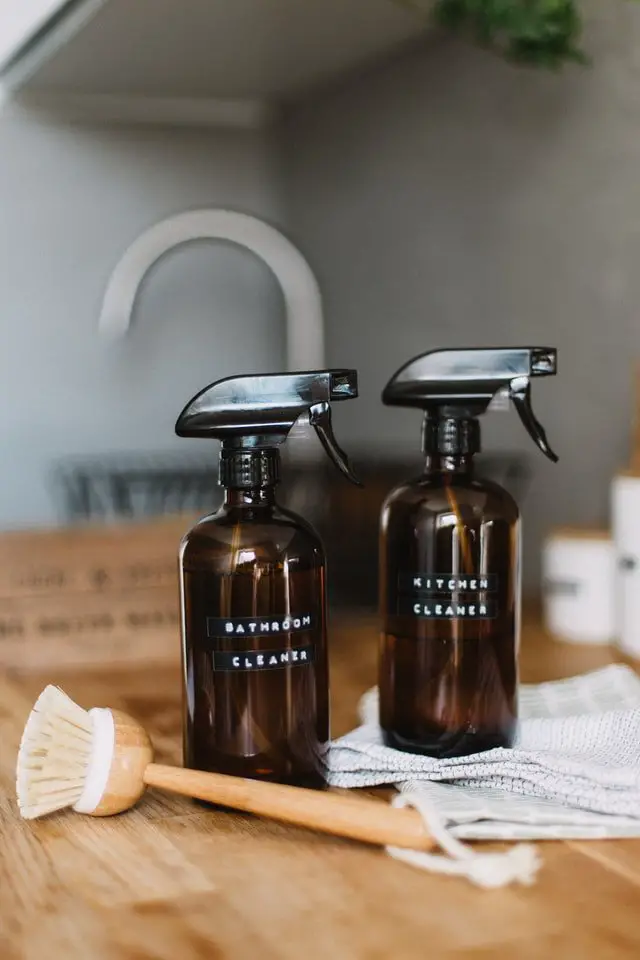The indoor air can be up to 100 times more polluted than the outdoor air, according to the US Environmental Protection Agency. On average, indoor contains 2 to 5 times more contaminants than the outdoor air.
But what are these pollutants, and why and how do they enter our homes?
Poor indoor air quality is caused by the release of hazardous compounds from products such as candles, paints, and cleaning products. Activities such as cooking, using the fireplace, and cleaning without sufficient ventilation also causes air pollution. Other sources of air pollutants can be the soil underneath the house or nearby traffic or industry.
Common indoor air pollutants
There are many compounds that reduce air quality and pose a health risk. The health risk of air pollution is dependent on several different factors. These factors include the type of compound, the concentration (amount) of this compound in your air, your exposure to them, and how healthy you are.
The most common air pollutants found indoors are:
- fine dust
- carbon monoxide (CO)
- carbon dioxide (CO2)
- radon
- volatile organic compounds (VOCs)
- mold
Most air pollutants are not noticeable because they are colorless and do not smell. Let’s learn how these compounds enter our air.

Fine dust
Fine dust is the name for very small dust particles. It is more harmful than larger dust particles because it can enter your lungs deeper because of their size.
Indoor fine dust is caused by many activities, including cooking, burning candles, and smoking. Incoming outdoor air also contains fine dust, for example coming from car exhaust. Outdoor air continuously enters the house through natural and mechanical ventilation, as well as open windows. However, this is a good thing since outdoor air is generally cleaner.
Carbon monoxide (CO)
Carbon monoxide (CO) is a gas formed by the incomplete burning of (carbon-based) fuels. Every form of burning, including very efficient appliances, does release some CO.
The most common emitters of carbon monoxide are the central heating system, fuel-based space heaters, and the geyser or boiler. Other sources of CO are gas stoves and the fireplace. CO can also enter the house via leaking chimneys or leaking vents. Tobacco smoke also emits carbon monoxide.
CO2 (carbon dioxide)
Carbon dioxide (CO2) is a normal component of the air around us However, in very high concentrations, it can lead to health effects and eventually oxygen deprivation. High CO2 levels are most common in poorly ventilated rooms with a lot of people breathing out CO2. Since people (and animals) breathe out CO2, it accumulates indoors when there is insufficient ventilation of fresh air.
CO2 is also released when cooking and using the fireplace. The soil underneath your house can emit CO2 as well. This mostly happens near farmlands and mines.
You can read more about CO2 in my article: What are healthy indoor CO2 levels?
Radon gas
In the United States, radon gas is the second leading cause of lung cancer after smoking. Radon is a radioactive gas coming from the soil. It is common in many but not every part of the world. You can read all about radon in my article: What is radon? (origin, health risk, and preventive measures).
Volatile organic compounds (VOCs)
Volatile organic compounds mostly come from human-made products. There are a lot of different VOCs. Their effects can range from highly toxic to no negative effects on our health. (source)
The most common sources of indoor VOCs are:
- paints
- cleaning products
- deodorizers
- dry cleaning fluids
Formaldehyde
Formaldehyde is a common VOC. However, I want to mention it separately because according to the Environmental Protection Agency (EPA) it potentially causes cancer. It is a pungent-smelling gas. Sources include:
- cleaning products, fabric softeners, and conditioners
- carpet and rugs
- resins and glues
- tobacco
- a type of insulation called urea-formaldehyde insulating foam (UFFI)
Mold growth
The spores of molds are always floating in the air in very tiny amounts. This normally does not pose a health hazard. However, when mold spores land in a good spot (warm and humid), they start to grow and can produce many spores. This can lead to negative health effects as well as damaging wood and fixtures.
The bathroom is the most common room with mold issues as it had the highest humidity in the house.
Appliances and household products of concern
There are several common sources of indoor air pollutants that are present in almost every home or office. These appliances and products should be used with care and maintained properly in order to minimize their contribution to poor indoor air.
These products and appliances include:
- carpets
- cleaning products
- poorly cleaned or maintained ventilation
- geysers, boilers, and central heating system
- gas stove and fireplace
- paint
- candles and incense
Carpets and rugs
The relationship between carpets and rugs and indoor air quality is an interesting one. Carpets and rugs trap dust particles that are kicked back into the air when you walk over them. Hereby, they contribute to a continuous circulation of airborne dust.
However, since carpets and rugs trap dust particles, they can be dust sinks when vacuumed regularly. Hereby, they can potentially contribute to the removal of airborne dust.
Additionally, carpets and rugs can themselves be a source of hazardous compounds since they wear out every time you walk on them.
If you are considering purchasing a rug, or already have a carpet or rug and want to replace it, I recommend considering buying a natural rug that does not contain hazardous substances.
Cleaning products
Surprisingly, cleaning agents are a source of air pollution. Exposure to compounds emitted from cleaning agents depends on many factors, including its composition and reactive chemistry. It is safest to use natural cleaning agents.

Poorly cleaned or maintained ventilation
Ventilation is the most important factor for indoor air quality. Proper ventilation makes sure stale and polluted indoor air is transported outside and fresh outdoor air enters the room.
Is it strongly recommended to make sure you ventilate constantly and sufficiently. Therefore, you need to make sure that your ventilation system is regularly maintained and cleaned.
A general rule for the ventilation system is to clean it every three months and replace the filters twice a year. This, of course, depends highly on for example if you have pets or allergies (in that case you should replace and clean more often).
Geysers, boilers, and central heating system
Household heating systems are a source of concern mostly due to their emission of carbon monoxide (CO). CO is emitted even from the most efficient appliances. Therefore, it is recommended to hang a few carbon monoxide detectors in your house. Most commonly in the bedroom to protect you while you sleep. Depending on where the water heating system is situated, another CO detector should be installed.
Gas stove and fireplace
The gas stove and fireplace are both sources of carbon monoxide as well as fine dust particles. Proper ventilation and airing when using the fireplace or when you are cooking is highly recommended. Installing a carbon monoxide detector is another safety precaution.
Paint
Regular paint is a source of volatile organic compounds (VOCs). These compounds are emitted from paint during the drying process, therefore it is recommended to air and ventilate constantly during painting. Additionally, according to an extensive study on the release of VOCs during and after painting, it is recommended to at least not use the painted room for 14 days. Another option is to look for low-VOC paint.
Candles and incense
Candles and incense can unfortunately consist of and therefore emit all kinds of potentially harmful compounds. A common air pollutant coming from candles is particulate matter or fine dust.
Healthier options are vegetable-based candles, soy candles, or beeswax candles.
Cigarettes
It won’t come as a surprise that you need to stop smoking. Smoking does not only damage your lungs but also negatively affects the people around you. If you can’t stop smoking but want to minimize the exposure to your family and friends, stop smoking indoors. Smoking emits CO2, fine dust, CO, and many more hazardous chemicals.
Symptoms of air pollution
Air pollution can lead to many adverse health effects. If you want to read more about the short and long-term health effects of poor indoor air, please read my article: What symptoms are often linked to poor indoor air quality?

